Fashion Technology Emerging Futures Evaluation – Summary Report
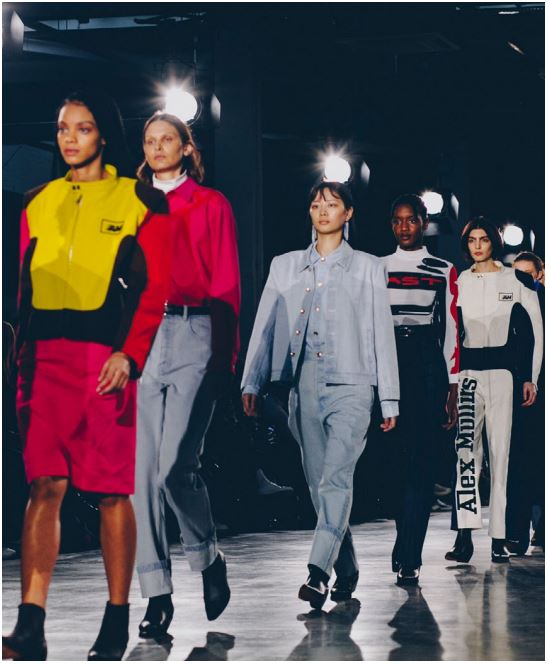
Image Description: Models walk the runway, bright lights shine above them.
Foreword by London College of Fashion
London College of Fashion, University of the Arts London, founded Centre for Fashion Enterprise in 2003 in order to provide business support to cover the lacking provision available at the time for fashion businesses. Today, as then, our work and ethos provide targeted, bespoke advice and guidance for businesses supporting them to develop and grow their business and management ability to increase their competitiveness.
The Fashion Technology Emerging Futures project, that this report from BOP so brilliantly illuminates, was conceived and delivered in collaboration with two partners: CENTA, who brought specialist production expertise and support in the jewellery sector, and London Borough of Hackney, who provided the bridge into strategic projects in the borough to encourage business retention in the area, driving economic growth and providing employment opportunities.
When designing the project we drew on CFE’s significant track record of innovative SME support, achievements and experiences of previous projects and responded to the digital, sustainable and social drivers of transformation within the fashion industry. In the period of time between the inception of the project and its completion we saw a dramatic development that has and will shape the economic climate going forwards – the EU referendum and our anticipated exit from the European Union.
Through delivery we recognised that FTEF was even more significant in this new context and vital in helping fashion and fashtech SMEs think about their strategic development and business models. In the face of such uncertainty, we have seen an appetite for increased collaboration and openness to co-operate that has inspired new products and new ways of doing business. We have also seen more focus on sustainability, which has become a high priority for some of our most innovative new businesses in the sector who seek to embed it into their creative vision and commercial values. This coupled with the adoption of new technologies is encouraging emerging businesses to question the established fashion system and develop their business models to address the current challenges and meet, head on, the opportunities of the future.
Whilst the initial investment sought to deliver the project was not fully committed, the projects’ gained understanding of the pros and cons of allocating specific investment levels to further growth. This has enabled knowledge to be fed into legacy projects. Two such projects that are benefiting from the experience and achievement of FTEF are DeFINE, a collaborative project co-funded by the European Commission’s COSME programme aiming to support the fusion of cutting-edge technologies and innovation with the European fashion and design industries, and the Fashion District, an initiative that will drive economic and social transformation in east London.
Further to that legacy, our partnership and strong relationship with CENTA and London Borough of Hackney is embedded beyond the lifetime of the project and is reflective of the collaboration that has been essential in delivering the results outlined in this report. With thanks to them and to all of the UAL and LCF staff who were intrinsic in this project, we are immensely proud of what we have achieved, and the resulting successes of the businesses supported.
Taking this work forward, the legacy of the project will be seen in our continued commitment to supporting innovative fashion and fashion-tech businesses establish, scale and grow holistically as part of London’s exciting Fashion District, and see them flourish globally.
We hope you enjoy reading this report.
Linda Roberts
Director, Graduate Futures, Business and Innovation, London College of Fashion
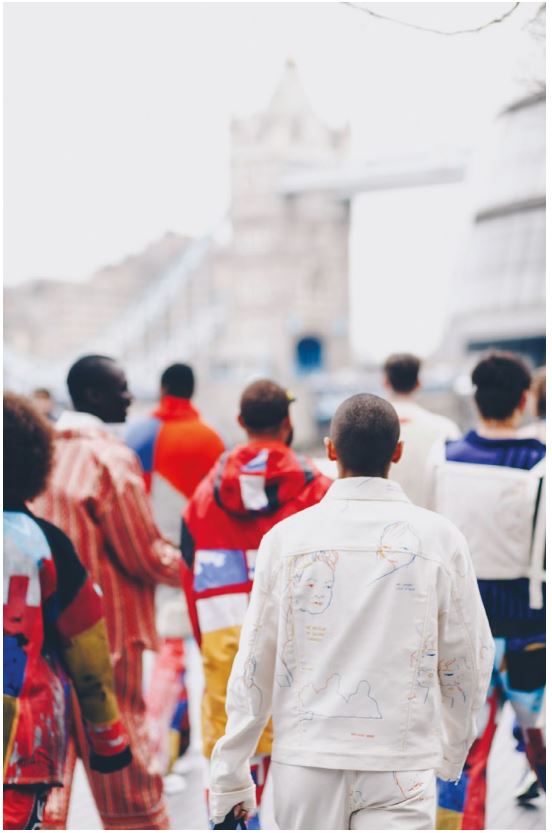
Image Description: Male models wear primary colours. One wears an all-white outfit which has been illustrated with line drawings. The models’ backs face the camera, they are walking and talking to each other. London Bridge can be seen in the background.
Supporting Growth and Innovation in Fashion and Technology
Fashion technology (fashtech) is a key opportunity area for London. It can help drive innovation and showcase London’s talent, as well as strengthening the city’s standing as a fashion capital for design and manufacturing. The FTEF project has provided valuable support to a promising group of fashion, fashtech and jewellery businesses.
London is an internationally recognised fashion capital. It is home to world-class fashion houses, ateliers and universities, attracting talent from around the world. As a sector, fashion is a key contributor to exports, high value jobs and economic activity and it is a flagship sector for the UK creative industries.
Fashtech is an important opportunity area for London. It brings together two areas of expertise and comparative advantage – fashion and technology – to drive innovation. On the one hand, fashtech can be seen as a sub-sector of the fashion sector, in that it focuses on enterprises working on technological advances in fashion. On the other, a wider view sees fashtech as involving the adoption of technology in fashion enterprises. In practice, it is both these things.
Fashion enterprises in London face some specific challenges. The annual fashion cycle places stress on cash flow, the rising cost of operating in London hits profits, and rapid development in business models means fashion sector business must rapidly adapt to remain competitive. Yet enterprises in the creative industries have low levels of engagement with business support provision, so miss out on support and guidance that could help them overcome these challenges.
The Fashion Technology Emerging Futures project (FTEF) was designed to help realise the opportunity for fashtech. The project ran between March 2016 and November 2019, providing over twelve hours of support to 341 enterprises. It provided tailored advice, guidance and training to fashion, jewellery and fashtech enterprises across ten pro -gramme strands. The duration and level of support varied across these strands, from short intensive interventions to longer term two-year residencies. It was common for participants to take part in multiple strands. Criteria and support given was based on development stage and specific needs.
Participating businesses were given support, guidance, tools (for example cash flow templates) and, in some cases, access to studio and desk space to develop their capacity, business skills and knowledge.
Led by London College of Fashion’s pioneering fashion and fashtech business incubator, Centre for Fashion Enterprise (CFE), the project was a partnership with London Borough of Hackney and CENTA. The project was funded by the European Regional Development Fund (ERDF) with match-funding from partners.
This report provides a short summary of the key findings, lessons and recommendations from a full project evaluation undertaken by BOP Consulting. This document includes 15 case studies which explore in detail the impact of the project on enterprises.

Image Description: A candid photo of two Black male models – one of the models is in side profile and wears a grey tartan coat with orange accessories including sunglasses, knitted hat and neckpiece. The other model wears dark sunglasses, a dark knitted hat, a loose-fitting dark shirt and two wooden beaded necklaces.
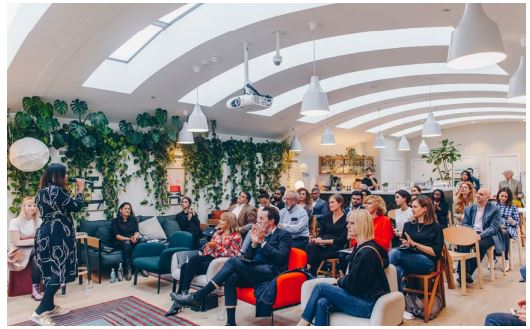
Image Description: A seated crowd claps for a speaker at the front of the room. The room is white and bright and creeping wall plants cover the left-hand wall. The speaker wears a black patterned dress and has brown hair.
Number of businesses support with over 12 hours of activity – 341
Number of new products and services created – 165
Average number of hours of support – 20.7
Project budget – £3,200,00

Image Description: A crowd watches a model walk on a runway. The model wears a light blue and dark purple striped dress, the dress has one shoulder and there are ruffles on the bottom which trail to the floor at the back.
Economic impact to London:
Annual net turnover uplift – £6.6 million
Annual net gross value added uplift – £2.5 million
Number of new fulltime equivalent jobs created – 104
Key Findings
The leaders of these, often young, micro enterprises have developed important skills and capabilities. This has put them on a stronger footing to sustain and build their businesses.
FTEF participants are typically micro enterprises of one or two employees. The founder (who is also owner and manager) is often the sole employee, with additional part time or contracted workers. The businesses are typically young; on average they have been operating for just over two years.
The founders are the driving force of these enterprises. They develop the initial business concept and often deliver every stage of the business from design to sales. The skills and capacity of these leaders are crucial for the success of the business. Many FTEF participants have studied fashion or design at university, however feedback from participants indicates they feel these courses lacked an industry focus and did not provide advice and guidance on setting up or running an enterprise in the sector.
FTEF provided key skills and capacity for professional development. As a result of FTEF, 90% of participants reported an improvement in the overall direction of their business. They experienced a boost in confidence for managing their enterprise and most indicated an improvement in their ability to manage growth. Over half reported better financial management as a result of FTEF, which is a crucial capability in a sector so challenged by cash flow management.
Numerous respondents highlighted the longlasting impacts of the project, both on their business and their own development. They come away having gained a sense of empowerment regarding their own development and confidence in their abilities.
There has been a high survival rate amongst participants. Over the project period, 98% of respondents remained trading. This is significant, given the highly competitive sector they operate in, where the survival rate for enterprises is 94% 1 for the first year. Some of this high survival can be attributed to the competitive nature of the selection process, however the skills and capabilities built through FTEF have undoubtedly put businesses on a firmer footing for the future.
1. Based on an average of all businesses classed under manufacturing apparel, retail and wholesale. Source: ONS (2013)
‘[The biggest impact of FTEF on my business has been] the help to steer me in the right direction, making me question various aspects of my business, such as who I am aiming my product at, how can I market towards them, and what my next steps are.’
9 out of 10 participants felt FTEF has led to an improvement in the overall direction of business
8 out of 10 indicated an improvement in their confidence for managing their business
3 in 4 reported improved ability to manage growth

Image Description: A model walks the runway in a sheer black top layered with a black bralet and black waist cincher. This is paired with short green shorts which have a sheer black fabric top layer.
Key Findings
Many participating enterprises were already growing. FTEF has helped them develop substantially, leading to additional business turnover, profit, taking on new employees, and contributing significantly to the London economy.
The FTEF project targeted high growth and high growth potential businesses, with applicants having to provide evidence of this before selection. Therefore, some growth would be expected within the cohort during the period. Nonetheless, the rate of growth of the intensively supported enterprises2 was notable. Comparing turnover on enrolment to the end of programme survey data, turnover for the intensively supported enterprises more than doubled.
The evaluation’s economic impact model accounts for what would have happened in the absence of the project (‘deadweight’) and finds that around half of this growth can be attributed directly to the FTEF project.
There was also a boost in profitability. The average profit per business grew from £3,500 at the start of the project to £5,500 at the end, a 65% in-crease. Whilst the profit margin of these businesses grew on average from 5.8% to 6.6%.
The average total number of employees (including directors) for those who received intensive support increased by one full-time equivalent (FTE), from 1.6 FTEs at the start to 2.6 at the project’s conclusion. Growing a team, particularly taking on the very first employee, is a key challenge and employment growth both reflects and drives business performance and resilience. For some, such as Sabina Savage, FTEF helped them take on their first employee, which is an important milestone. Further employment growth amongst FTEF participants is expected, as 81% of respondents anticipate the total number of people they employ would grow in the next three years.
Overall, FTEF has brought considerable economic benefits to London. Accounting for the fact that no economic development project happens in isolation, the evaluation economic impact model estimates that FTEF contributed a net turnover uplift of £6.6 million (per annum), Gross Value Added of £2.5 million (per annum) and 104 new full-time equivalent jobs.
FTEF provides good value for money when compared to other sector support projects, both in terms of cost per output achieved and GVA return on investment. It also provides reasonable value for money on the cost per full-time equivalent job created measure, which reflects the challenge of growing employment in very small firms.
2. 259 enterprises which took part in the more than introductory ‘Market Entry’
FTEF supported me to recruit my first assistant… without my assistant, there is no way that the business would have grown the way that it has.
98% still trading at the end of the project
On average turnover of intensively supported businesses doubled
Average increase in employment of one full-time equivalent employee for the 259 intensely supported businesses
Uplift of 39% in the average value of sales
Average profit per business grew from £3,500 to £5,500, a 65% increase
Innovation happened in several different ways. Firms are introducing new products, services and processes, developing new ways to test products, and changing their business models. The most notable examples of technological innovation came from individual entrepreneurs, rather than fashion and technology companies working together.
The FTEF project provided the opportunity for innovation. Intensively supported enterprises report developing twice the number of new products, services or processes in the last 12 months when compared to the 12 months before FTEF. Two-thirds indicated they were able to develop higher quality products as a result of the support they received, although only one-third reported to have more time and space for innovation. Nearly half have changed the way they test their products.
Four in ten participants indicate a change in their business model. For some this has led to a significant ‘pivot’ in product or approach, the BrikL case study illustrates how insights gleaned on FTEF led to a change in direction. For others, the change in business model was more subtle and included changing the way enterprises communicate with customers, their approach to product testing and manufacturing processes.
The project also led to new collaborations between enterprises. Illustrated by the Ka Wa Key case study, over half of respondents indicated that they are collaborating with a contact made through the project, with over 70% feeling more connected to a group of similar and complimentary businesses. However, there is limited evidence of new products and services coming out of these collaborations so far, and the main benefit of these connections has been sharing information and contacts.
The most significant examples of technological innovations within FTEF are firms that harness the expertise of the founder, who has relevant experience from a different sector (e.g. engineering). These leaders provide a route for technology transfer into the fashion industry. FTEF has a key value in providing an effective channel to support these leaders. It has brokered important relationships and provided essential industry knowledge to these enterprises.
‘The biggest impact has been providing an environment which enables us to rapidly test ideas with industry experts and fellow innovators. The educational, emotional and physical environment FTEF provides businesses with is what makes being part of the programme so unique and effective at catalysing fashion’s next leaders.’
Key Findings
Two-thirds developed higher quality products as a result of FTEF
Over half are now collaborating with someone they met through the project
FTEF has been a valuable mechanism for knowledge exchange between the CFE and industry, influencing both research and teaching. It has contributed to a flourishing network of fashtech and fashion enterprises and it has helped define what the fashtech sector is in London. The project’s success demonstrates the important role London College of Fashion (LCF) can have in supporting the fashion industry and how this can boost the wider London economy.
The experience, knowledge and networks developed through FTEF have informed and contributed to strategically important research and knowledge exchange projects for LCF. It provides academics with cutting edge enterprise and product case studies for teaching as well as industry insights to inform research proposals and projects.
Insights from FTEF have fed into the DEFINE project which is supporting a network of incubators and accelerators working in fashtech across Europe. These insights have helped researchers to better articulate and define the sector. In addition, the knowledge generated through FTEF is supporting other research and knowledge exchange projects such as the UAL-led Creative Cluster The Business of Fashion,Textiles and Technology and the Fostering Sustainable Practices AHRC project.
Through investing in the fashtech sector, FTEF has helped provide a platform and credibility to fashtech activity and businesses. It has contributed to raising the profile of the sub-sector amongst stakeholders and it has cemented CFE’s place as a crucial centre of specialist expertise for fashtech.
One of the key legacies of FTEF is the contribution it has made to strengthen and develop the network of high growth and high growth potential fashion and fashtech businesses, which has grown around CFE. These networks are particularly valuable to leaders and enterprises who are new to thesector or new to London and CFE provides a route to accelerate the pace of connection to potential collaborators and suppliers.
FTEF’s unique contribution to London
FTEF has clearly played a unique role within the fashion and fashion technology sector in London. Although there are various accelerators and incubators, there are no comparable projects which offer similar intensive, targeted support for fashtech. The CFE has a good reputation in the sector and with partners, and enterprises appreciate its close connection to and understanding of the industry. The unique and timely positioning of this project, at the interface between fashion and technology, has enabled CFE to build expertise and enhanced its reputation as an expert in the cutting edge of how fashion and technology can work together to develop new value.
Although FTEF is unlikely to continue in its current form, its legacy in terms of expertise and connections with enterprise will be utilised in LCF’s future cluster and graduate enterprise support activity, as well as providing an evidence base for developing new funded project opportunities.

Image Description: A male model wears a reflective outfit. The top is sleeveless and has zips from top to bottom on the right hand side with bright yellow fabric trim. The top is dark blue and green. The trousers are the same material but in lighter blue with red patches.
Lessons and Recommendations
Lesson 1: Supporting technological adoption
Many of the fashion and jewellery enterprises that engaged on FTEF are not on the cusp of new technical or technological innovations. Nonetheless, engaging with and embedding technology can help them scale, enhance their production processes, and develop their business models.
Recommendation.
In future project design, ensure the needs of those looking to adopt rather than develop technology are explicitly addressed and catered for. We recommend this nuanced understanding of need is embedded in communications about the programme, ensuring participants expectations are aligned to project delivery. Working with enterprises who adopt technology could provide an opportunity to explore and research the mechanism through which adoption can contribute to innovation.
Lesson 2: The real source of innovation
Within the design of FTEF there is an assumption that fashtech innovation is, at least in part, driven by the coalescence of fashion and technology actors and enterprises. There is limited evaluation evidence that innovation is emerging as a result of collaborations between the fashion and technology enterprises, although this is something that may develop over time.
The most apparent source of technological innovation is those enterprises founded by people from outside the sector. These leaders apply knowledge and insights from a different but complementary context (e.g. engineering or software). There is evidence that FTEF has helped this special group of enterprise leaders make a soft landing into the sector, through brokering important connections and providing essential industry knowledge.
Recommendation.
Building on FTEF, we recommend CFE continues to support technological innovators transferring from other sectors. The specific needs of these individuals should be built into the future design of enterprise support. Activity should focus on the best way to accelerate their connections into the fashion enterprise network in London.
Further opportunities of knowledge transfer from other sectors could be explored through models that bring technologists, engineers and fashion sector experts around a real industry problem.
Lesson 3: Challenge of engaging with investors
The project aimed to develop a stronger investment ecosystem for fashtech. It sought to galvanise a group of investors, develop their understanding of the fashtech sector, and ultimately connect them to investment-ready enterprises. Overall, there was little evidence of a stronger investment ecosystem resulting from FTEF. One contributing factor for this was the loss of The Trampery delivery partner who was leading on this strand of the project. This resulted in less activity focused on the investor community than was originally planned.
Recommendation.
For future programmes which involve strategic and delivery partnerships, we recommend reviewing partnership agreements and contingency arrangements to ensure continuity of delivery. Investment is a crucial component of the fashtech ecosystem, we recommend considering the extent to which CFE may wish to develop their in-house expertise in this area or broaden the range of partners they are able to work with on this topic.
Lesson 4: Critical differences between jewellery and fashion businesses
Participating jewellery businesses have notably different business models and challenges than those in fashion. Critically they tend to have higher turnover than comparable fashion businesses (caused by the high cost of precious stone inputs) and jewellery businesses are less beholden to the annual fashion cycles. The jewellery component of FTEF was largely run by CENTA, and there was little meaningful connection between the fashion and jewellery businesses engaged with FTEF.
Recommendation.
Recognising the learning from FTEF, CFE no longer plans to combine fashion and jewellery support in one programme. The evaluation evidence supports this approach.

Image Description: A white woman with brown hair works on a light blue tulle garment in a studio. The studio is white. The woman wears a white shirt and has a block fringe.
Alexander White
PARTICIPANT
Alexander White (owner)
PROGRAMME
Market Entry
DURATION
May 2017
(2 days)
SUPPORT
Two-day business support programme
A chance encounter
Alexander White was in the departure lounge at the airport when he spotted one of his design idols, Sandra Choi, creative director of Jimmy Choo. He decided that he had to take the opportunity to speak to her, and initially asked for a job. However, when the pair met for a follow-up meeting at Sandra’s office to go over his portfolio, she advised Alexander to set up his own brand.
This chance encounter led to the creation of his label, Alexander White, which was founded four years ago and produces high-end Italian-made women’s footwear. Signature elements to his collection include embroidery and metallic materials, as well as the use of traditional design techniques to create a modern aesthetic.
Prior to setting up his label, Alexander studied design and applied arts at the University of Edinburgh, and a postgraduate degree in footwear design at Cordwainers, London College of Fashion. He previously worked for Erdem, Giles and Kurt Geiger.
‘[The FTEF project] gave me reassurance that what I was doing was right. It’s isolating when you’re your own boss. It was great to hear comments from others going through the same thing.’
Challenging retail environment
Alexander identified the testing retail environment as the biggest challenge facing his business – as larger retailers have struggled, there has been less support available for younger brands. Before, companies such as Harrod’s would take on young talent to incubate them. Now, he says, they have to be making money already to have a chance of getting picked up.
Alexander enrolled on the FTEF project in order to ask the questions that he couldn’t find answers to anywhere else. He describes his family upbringing as ‘business-minded’ but acknowledges that it can be isolating to be your own boss and, as a young designer, difficult to know if you are doing everything right.
‘The retail environment is very difficult right now – the retail world is collapsing on its feet. There’s not much support available for young designers, compared to previous generations. Everything is to do with money.’
Swapping stories
Alexander took part in the Market Entry programme in May 2017, at which point his label had been upand-running for two years. He attended two days of workshops covering everything from legal advice to marketing and finance. For him, however, a particularly useful aspect of the support was the opportunity to share his experience of founding a business with contemporaries in similar situations, who are encountering similar challenges.
What’s changed
While he didn’t fundamentally alter the way that his business operates following the programme, Alexander found it reassuring to speak to experts and other Fashion SMEs. These conversations helped him to feel more confident in his approach. The label has continued to grow: Alexander White has international stockists, exhibited at this year’s London Fashion Week, and won Footwear Designer of the Year at the Drapers Footwear Awards 2017.
What’s next
As the retail climate continues to decline, Alexander is now concentrating on staying one step ahead by making the brand ‘21st century-focused’. One way he plans to achieve this is through updating the website to learn which products people are responding to, not just through clicks and page views, but through monitoring the mouse movements of visitors to the site. This data can be used to inform future designs and production planning.
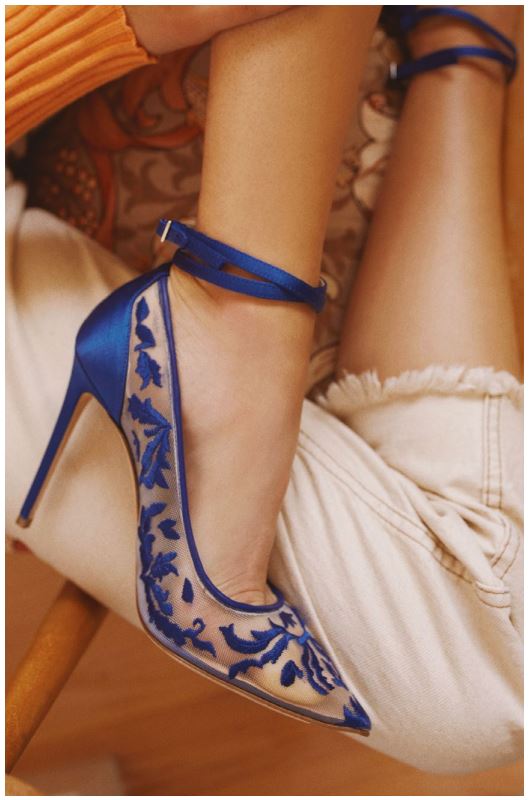
Image Description: A woman’s leg is shown wearing a stiletto. The shoes are deep blue on the ankle and heel, with translucent material covering the rest, the translucent part is patterned with the same deep blue embroidery. There is a blue strap which wraps twice around the ankle.
Long Live Southbank
PARTICIPANT
Matthew Nelmes
(Project Manager)
PROGRAMME
Fashion Pioneer and Market Entry
DURATION
Nov 2018 – April 2019
(6 months)
SUPPORT
One-on-one coaching sessions and expert workshops
‘Through FTEF, I was able to access valuable new contacts at a Bulgarian factory. They are now going to produce all our bags.’
Saving the Southbank
Long Live Southbank (LLSB) was founded in 2013 as a campaign to save the skateboarding spot on London’s Southbank. By September 2014, the campaign had saved the space and gained a legal guarantee for its long-term future.
In 2015, LLSB launched a new campaign to restore the entire Undercroft, opening up an additional 400m² of space for skating, which hadn’t been used since 2004. After careful preparatory work and a successful planning application, in June 2017 they publicly launched their joint fundraising campaign to raise £1.1m by spring 2019. However, while the building work for this space was underway, it needed additional funding beyond donations to reach the target set by LLSB.
To provide this funding and build on the LLSB brand, they launched a fashion line, covering T-shirts, hoodies, accessories, artwork, and books. These are sold at the skate spot, as well as online – where they distribute mostly in the UK and across Europe, but also Japan and other countries. LLSB have developed partnerships and collaborations with big brands including Dickies and Adidas. This has been a crucial factor in their success.
Three key aims
LLSB had three key areas they wished to focus on with the Fashion Pioneer project. First, to further broaden their networks beyond the skateboarding community to engage with those who can help them design, produce, and distribute their clothing and accessories. Second, to develop business knowledge around cashflow. And third, to recognise and broker deals that are sustainable and complementary to their brand.
A key challenge for LLSB was that they are a not-for-profit working towards a community asset, so they needed to become more selective as to who they are associated with. Collaborators and partners need to align, recognise and help preserve their cultural heritage. Furthermore, there are only three employees (two full time), making outsourcing essential for scaling up.
‘[Before the project] I had no idea about distribution deals or pricing. This meant that we were tricked into deals that weren’t the best for us, especially around garment production. We wanted to know what questions to ask, as
well as turn down deals that didn’t align with our values or brand.’
Finding their weaknesses
Following a needs assessment, LLSB were able to focus on what areas they felt were weakest (cash flow management and distribution). Over the following six months they have gradually utilised all available support offered by the programme. The approach has been defined by participating in a workshop, and then engaging in a one to one follow up sessions. They were also given access to a studio facility to create garments, which was a first for LLSB.
Tapping into expertise
For LLSB, the best thing about the project has been engaging with practitioners who are sector leaders. They were able to tap into bespoke expertise and access gatekeepers around the world (including factories in eastern Europe), which they wouldn’t otherwise be able to access alone. As well as providing practical business advice, which can be applied in real life, the support provided a ‘second pair of eyes’. This has enabled LLSB to trial new ideas (e.g. experimenting with embossed logos on hoodies) and developing their product range (e.g. books and artwork), both in the UK and abroad.
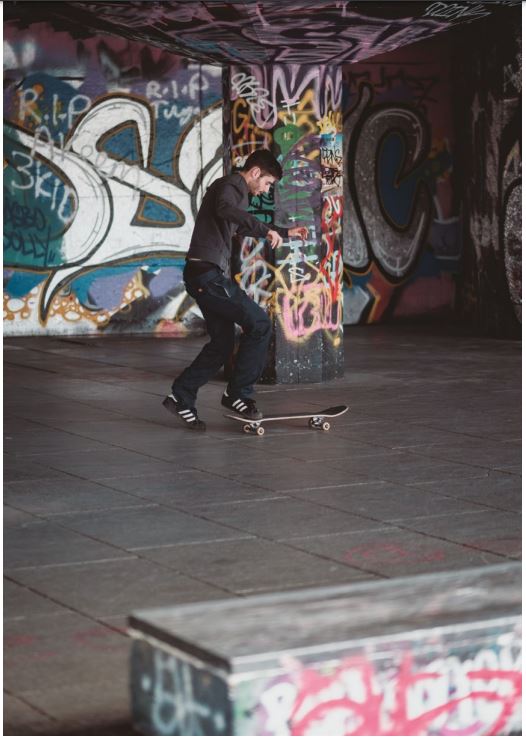
Image Description:
A man rides a skateboard in the covered skate park on the Southbank. He is white with brown hair and wears a grey jumper with blue jeans and black and white trainers. Colourful graffiti covers the walls and ceiling.
Hanna Fielder
PARTICIPANT
Hanna Fielder
PROGRAMME
Market Entry and Fashion Production 1
DURATION
May 2018 and July 2018
SUPPORT
Attended two × two-day workshops
‘I spent three years learning to tailor with the Berlin Opera House. I came from a purely technical background, with no formal business training.’
From side project to growing enterprise
When Hanna Fielder first registered her eponymous womenswear label in August 2017, the business was still what she refers to as a ‘side hustle’. However, by May 2018, after initial success, she decided to dedicate herself to the company full time and the first capsule collection launched in December of the same year.
Her brand produces luxury, ready-to-wear womenswear for professional women. All products are produced exclusively in the UK by local craftspeople. Hanna took the decision to make her supply chains and production location completely transparent, in order to allow the customer to ‘engage with the product and understand how it was produced’.
Technical skills meet business skills
Hanna comes from a highly technical background. Prior to starting the business, she completed a three-year bespoke tailoring apprenticeship with the Berlin Opera House before going on to study fashion pattern cutting at the London College of Fashion. This meant that prior to setting up her own label, she had received no formal business training.
Hanna enrolled on the programme looking for examples of best practice in production, operations, sales, and marketing. Also important to Hanna was the chance to extend her professional network and make contact with suppliers, wholesalers, experts, and other young creatives.
Developing production processes
The use of sustainably sourced materials and support for local British craftsmanship is an important part of the Hanna Fielder brand identity. During the Fashion Production 1 two-day workshop, Hanna took part in sessions that covered all stages of the production process, from communication with suppliers to finding manufacturers.
She also participated in the Market Entry programme, where she received business advice with ‘a clear focus on the fashion industry’ and hands-on help from industry experts.
The value of FTEF for Hanna
The Fashion Production 1 workshop gave Hanna valuable feedback on production facilities. It also put her in contact with some potential producers, which may prove useful as the company gears up for its second collection.
‘It was really amazing to get a one-toone follow up. It was helpful to ask specific questions and get tailored advice, which is not always possible in a group scenario.’
On the Market Entry programme, Hanna found the access to specialist expertise particularly beneficial and commented on the ‘good balance’ between CFE staff and industry experts. She felt that the advice she received was uniquely tailored to the fash ion industry and not just generic start-up advice. The workshops gave her the skills and tools to raise funds to employ her first part-time employee.
Working with FTEF project consultant, Angela Quaintrell, former head buyer at luxury department store Liberty, was highly valued by Hanna. She was able to hear first-hand what high-end buyers are looking for – both in quality but also the type of deals they would consider. Hanna has remained in contact with her peers on the programme, who meet regularly to support one another.
Identifying a wholesale partner
The label’s second collection is due to be released in September 2019. While Hanna has had some initial conversations with wholesalers, her primary focus in the run up to the release will be securing a wholesale partner. Following the programme, Hanna attended several follow-up events, including the Manufacturers Trade Show.
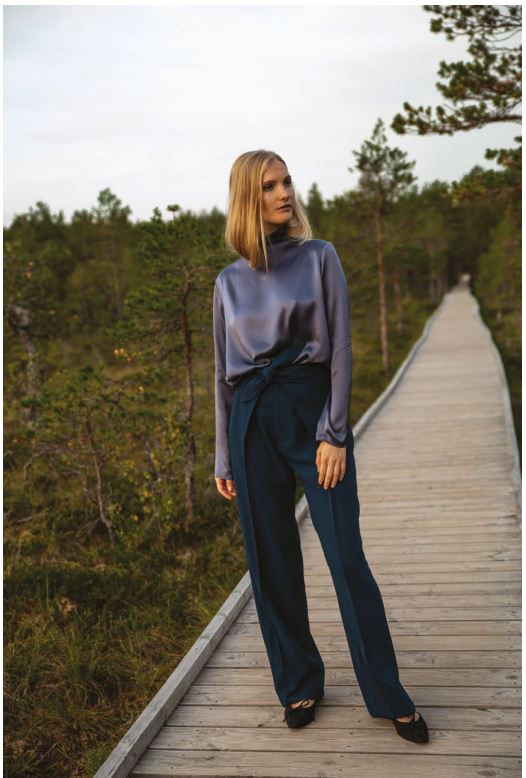
Image Description: A female model stands on a wooden boardwalk surrounded by greenery and trees. She is white with blonde hair. She wears a silk long-sleeved top in dusky purple with smart blue trousers and black flat shoes.
Petit Pli
PARTICIPANT
Ryan Mario Yasin and Arabella Ture
PROGRAMME
Fashtech Accelerate and Fashtech Pioneer
DURATION
1 year, September 2018 – September 2019
SUPPORT
Free desk space at CFE’s Mare Street office and tailored support
‘There is a stigma of being an outsider. If you have not received training in fashion production, it can be hard to join in.’
Breathing space
A trained Aeronautical engineer, Ryan wanted to apply his technical engineering skills to the world of children’s clothing, setting up Petit Pli in 2017 whilst completing a Masters in Global Innovation Design at the Royal College of Art and Imperial College London.
On realising how wasteful children’s clothing is, he pioneered a new approach to slow fashion by creating designs that grow with the child, from 9 months to 4 years. To realise a solution, Ryan leveraged his prior research knowledge in Aeronautical Engineering and specifically satellite structures. With an official prototype created in early 2017, Petit Pli’s rain and wind proof suits have now be come iconic within the industry.
Since receiving seed and angel funding, Petit Pli has gone from strength to strength. The brand received wider recognition after winning the Red
Dot Award, an international design competition for product design, communication design, and design concepts, and the H&M Global Change Award.
Breaking the fashion industry
Aware that success in the fashion industry often derives from both who you know and what you know, the team hoped that by participating in the programme they would gain contacts and general industry knowledge, along with skills in fashion design innovation. With backgrounds in science and engineering, COO Arabella said that she and Ryan ‘didn’t know what they didn’t know‘ when it came to the fashion industry and scaled garment construction.
‘As fashion industry outsiders, the project was great for accessing a knowledge base that we wouldn’t have been able to access otherwise.’
Developing a prototype
The programme offered desk space in CFE’s studios on Mare Street, where the Petit Pli team had access to manufacturing equipment such as sewing machines and a pattern cutting table, allowing them to develop their prototype quickly. Access to wider LCF libraries and on-line resources with extensive knowledge bases was also invaluable, as they were able to research into data around the growth rates of children. Without access to the equipped office space and wider resources, Petit Pli would not have been able to apply for and win vital funding from
Innovate UK.
Five key axes of productive activity
Being in the office space meant that they felt more motivated, resulting in greater productivity. They also made connections with other designers on the programme, such as Charles Jeffrey. Whilst there have been no formal collaborations with their peers from the programme, Arabella recognised that ‘the little conversations are really helpful’, and that working in a safe space together allowed peers to discuss mutual challenges and share ideas.
Arabella saw the programme as having five key axes of productive activity: meeting advisors, building PR, working with educators, social networking, and physical space. All of this has allowed the business to expand quite rapidly, with many new hires being made in a relatively short space of time.
Becoming leaders
Petit Pli are hoping to forge new partnerships, gain more capital to continue research and development, and eventually become a leader in wearable tech.
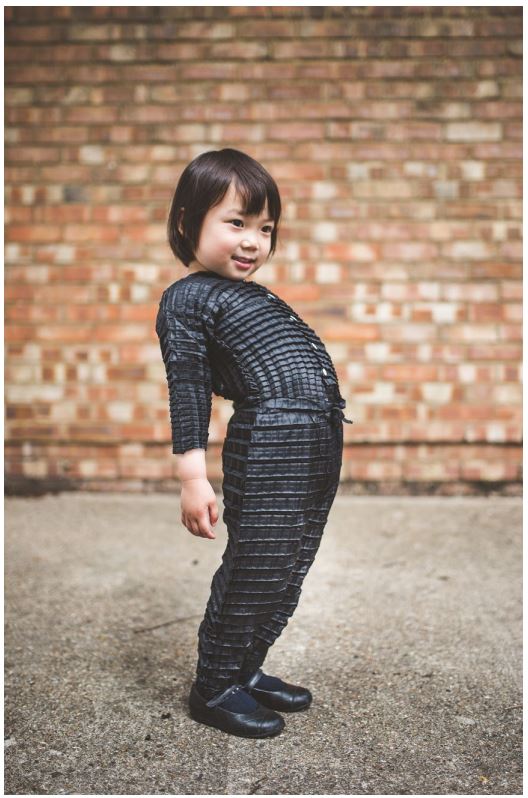
Image Description: An East Asian toddler wears a black jumpsuit and black shoes. They are smiling and leaning backwards, sticking out their tummy. They have a bob and a fringe.
Ana Thompson Fine Jewellery
PARTICIPANT
Ana Thompson
PROGRAMME
Jewellery Pioneer, Jewellery Production 1, Market Entry
DURATION
January – June 2019
6 months
SUPPORT
Business review and 2-day business support programme. Jewellery Production 1 in 2016
‘I’m not from a fashion background and didn’t haven have the necessary network. It was great to learn from other fashion designers.’
Jewellery inspired by nature
Colombian-born Ana Thompson started her career as an industrial designer, before deciding to come to the UK ten years ago to study an MA in Jewellery Design. She was later selected to complete a business kick-starter programme at the Goldsmiths’ Centre, and Ana Thompson Fine Jewellery was born.
Ana’s practice combines her passion for Colombia’s traditional goldsmith heritage, and the technological knowledge and expertise from her background in industrial design. Her designs are inspired by macroscopic and microscopic features of the natural world: those that cannot be seen by the naked eye.
Alongside magnification technology used in the design process, Ana also uses a range of cuttingedge technology, including 3D printing, laser precision technology, and rapid print cycles. The business was established in 2016 but had its official launch at London Fashion Week in September 2017.
Reasons for enrolling on the FTEF programme
In comparison to fashion start-ups, Ana felt that there was not much direct funding available for young jewellery businesses. Investors see jewellery as a risk, especially if they do not have an existing relationship with the designer or the brand is relatively unknown. This can mean that initial growth is slow as it takes time for new designers to gain trust within the industry.
Ana enrolled on the Jewellery Pioneer programme looking for support to take the company to the next level and reach a bigger audience. She knew this would mean an increased focus on business operations, establishing the brand and the evolution of her product line. Coming from a technical background, she felt as though she could benefit from the business expertise offered by the programme.
As part of the programme, Ana completed a product range planning exercise with an industry expert. This involved looking over the brand’s current product range, the price points, and any gaps in the collection. By getting a comprehensive overview of the existing collections and what had been selling, Ana and her consultant were able to devise a future product strategy.
These one-to-one sessions also covered the company’s target market, consumer targets, brand direction, growth, and next steps. Ana also attended a series of talks and lectures on other aspects of running a business, such as copyright, Brexit, business pitching, marketing, and finance.
‘It was a challenge to have so many different hats for different things. I wanted to find out: what am I good at? What can I delegate?’
Impact
The diagnostic exercise Ana undertook as part of the programme has played a key role in planning the future of the business. For example, the product range review has directly informed the development of new designs.
Ana has also developed a stronger, more coherent way to communicate her brand to potential buyers and investors, based on the customer segment and brand positioning analysis she conducted with her consultant. She also found that the digital marketing class has been especially useful in strengthening the brand’s presence online.
What’s next for Ana
As she comes to the end of the programme, Ana hopes that the skills she has learned will lead to an increase in online sales.
She would also like to continue to experiment with innovative technologies in both the sale and production of her products. For example, virtual
reality technology could be used to create a digital image of the collection’s design pre-production, leading to a more cost-effective and sustainable production model.
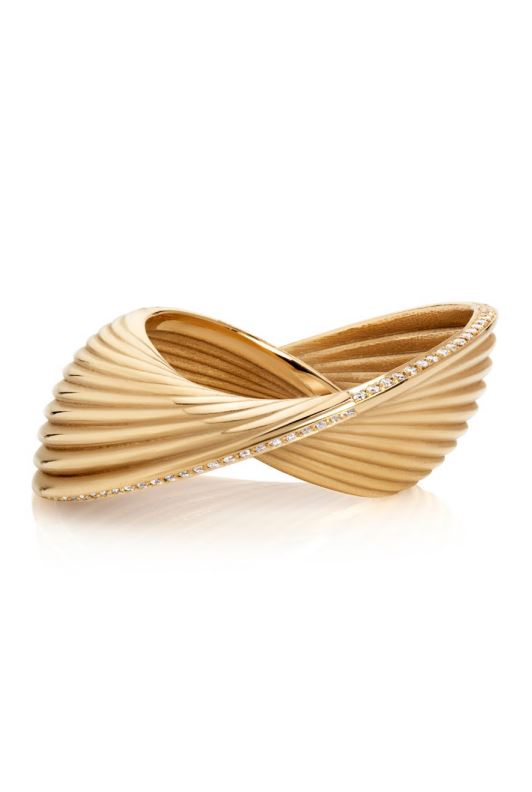
Image Description: A yellow gold ‘Vortex’ ring is against a white background. It is set with small white diamonds.
Lofo
PARTICIPANT
Lofo
PROGRAMME
Market Entry, Fashion Production 1, Fashion Production 2
DURATION
May 2019
SUPPORT
Two-day business support programme
‘As newcomers to the industry and to London as well, it presented itself as an incredible opportunity to meet professionals and get expert advice on how to run a business.’
Experiment whilst keeping classic fashion sense
Lofo is an exclusive designer brand aimed at experimenting with different styles. The brand was founded in October 2017 in Bucharest, Romania by two clothes designers, Ana-Maria Grigoriu and Stelian Dobrescu. The target audience of the company is young creative people wishing to experiment with their clothing while keeping a classic fashion sense. Lofo’s clothes are designed to prove that trendy clothes can be sustainable, trans-seasonal and made from natural fibres such as cotton and linen.
As Lofo’s production is currently handled by two workshops based in Romania, the biggest challenge has been to bridge production gaps and bring production closer to London. That would allow more flexibility and quicker turnarounds for the models they develop. ‘Production is the only place that we are missing opportunities’.
The attraction of FTEF
Lofo enrolled on the Market Entry programme in order to deepen their understanding of the fashion industry. They recognised that as ‘newcomers’ to both the fashion industry and London it would allow them to meet and learn from others in the sector.
Networking was one of Lofo’s major aims of participating in the programme, as Lofo’s designers wanted to meet colleagues with established
experience of 4–5 years and knowledge of the market. ‘If you want to side step the rules, you will need support. You need people to help you do this – people who have done this and reassuring us that we’re going in the right direction.’
Learning from experts
The Market Entry programme was made up of two-day workshops concentrated on strategic development, planning, financial, marketing, and
legal issues.
The first day was useful in terms of learning from others’ experiences as well as sharing their own success story, while the second day covered hard skills such as VAT, business planning, investors strategy, and IP laws. This helped Lofo to see the bigger picture and look to the future more strategically, considering where they are at the moment and what they need to work towards their goals.
Impact of FTEF support
‘Many of things we were thinking about prior to the FTEF seemed very far reaching and almost unattainable. We already had a functional business that sold online, had foreign buyers, and a manifesto, but there were many parts missing. Seeing people with vast experience in the industry talk about what they do has had a very striking effect. It showed us that industry is not a mirage, that it can be authentic. It allowed us to be confident in our plans, and that had a huge impact on a business like ours.’
For Ana-Maria and Stelian, the FTEF programme provided an opportunity to develop long-term connections and international collaborations. Following the programme, they have maintained contact with other participants from their cohort. Moreover, some of the connections gained have the potential to grow into future collaborations on the app for sustainable fashion. Vitally, the programme has allowed Ana-Maria and Stelian to feel confident in their plans moving forward. The programme’s Legal and IP workshop on how to secure a trademark gave the designers the knowledge and confidence to decide to change the name of the company.
Next steps
Looking to the future, Lofo are looking to broaden their networks further, and are planning to take part in Fashion Production 1 and 2 to further grow and develop their business. Strategically, they are looking for more flexible production and access to funding in order to build a high-scale production venue and physical shop.
The two highlighted three further areas of planned development:
• Higher level of the brand – getting connections with editorial realm; getting it seen more and getting it touch with people who could expand their brand awareness.
• Production – making a production line that is efficient, using the latest technology. Do things differently. A space where we can pursue that.
• Connect with people who know about production law.
Loot Forever will be moving into Poplar Works, a new type of space that will co-locate workspace, manufacturing and education facilities and is the product of a partnership between Poplar HARCA, The Trampery and London College of Fashion, UAL, and is part of the Fashion District.
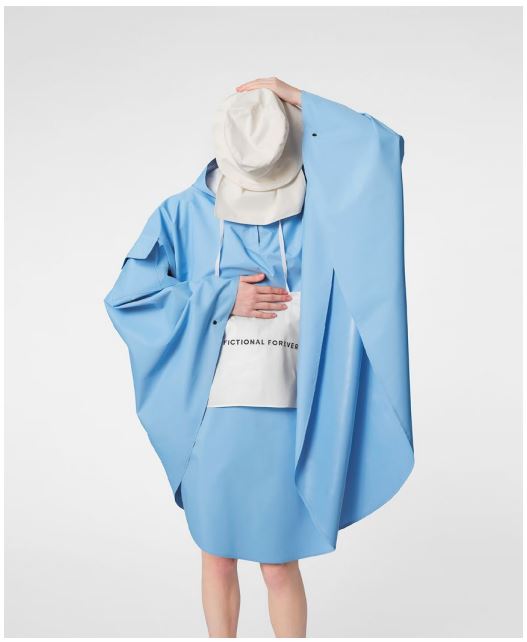
Image Description: A white model wears a light blue waterproof cape that reaches their knees. They wear a white bucket hat which is tilted to cover their face. One hand is placed on their head, the other is placed on their torso.
Sabina Savage
PARTICIPANT
Sabina Savage
PROGRAMME
Fashion Production 2
DURATION
November 2017 – May 2018
6 months
SUPPORT
12 hours bespoke one-to-one support
‘The CFE helped me enormously. The programme was helpful at exactly the right time, in exactly the right way.’
The prix Nouvelle Couture
Prior to founding the label, Sabina studied fashion design and pattern cutting at a couture school in Paris, where she was awarded the highly-coveted prix Nouvelle Couture upon graduation. She spent time working with fashion houses Chanel and Christian Lacroix, and designers Alexander McQueen and Gareth Pugh. Although Sabina enjoyed the experience of working in these highly creative studios, she realised that she would rather invest her time and enthusiasm into her own products. In 2013, she left work and started the business.
Sabina Savage is a luxury accessories brand, featuring intricate, hand-drawn prints which take six weeks each to produce. The designs are then printed and hand-finished in Italy.
Looking for help
Sabina came to CFE in 2017 with two clear objectives. Firstly, her workload had become overwhelming and she did not have the capacity to scale up the business. At the time, the company had no employees and Sabina had no experience with the hiring process.
‘I was hoping to launch a new product but I didn’t know how to do it. There was too much to do and I didn’t know what to do – I needed help.’
Secondly, Sabina knew she wanted to launch a new product – silk clothing – but she didn’t know what approach to take. What’s more, she wanted to get the fabric printed and produced somewhere in the UK, ideally in London, but didn’t have the necessary contacts to find a manufacturer. To help her with these goals, she applied for the Fashion Production 2 programme.
Direction from CFE consultants
Once she was enrolled on the programme, Sabina was assigned two mentors, who she describes as ‘very experienced and extremely knowledgeable’. They gave her tailored, one-to-one support to overcome the challenges she was facing as a business.
The first piece of advice Sabina received was to hire an assistant, to increase the capacity of the business and make the workload more manageable. Her consultant guided her through this process, helping her to write interview questions, define the job role and understand what she was looking for in a candidate.
They also gave ‘invaluable’ advice on producing a new product. Sabina’s mentors introduced her to 10 different London-based manufactures, accompanied her on factory visits and taught her how to create a ‘tech pack’: a design specification document that details all-important aspects of the design requirements.
Finding a manufacturer
With CFE’s help, Sabina hired the company’s first employee in January 2018. She says that having an extra pair of hands has made an unbelievable difference to the business:
‘Without my assistant, there is no way that the business would have grown the way that it has.’
Sabina was also able to launch her new product, a silk clothing line. The garments were printed and produced in London by a manufacturer that she met through the programme. The manufacturer in question does not have a website and Sabina believes that she would not have found them without an introduction from the CFE.
Next steps for Sabina
Following the success of the new collection, Sabina has ambitions to continue to scale up the company. She is hoping to hire another employee by the end of 2019 and have moved to a bigger studio space to reflect the growing business. She is also considering launching another product line in the near future.
Sabina feels that the support that she received from the CFE will continue to be beneficial in the next stages of the business.
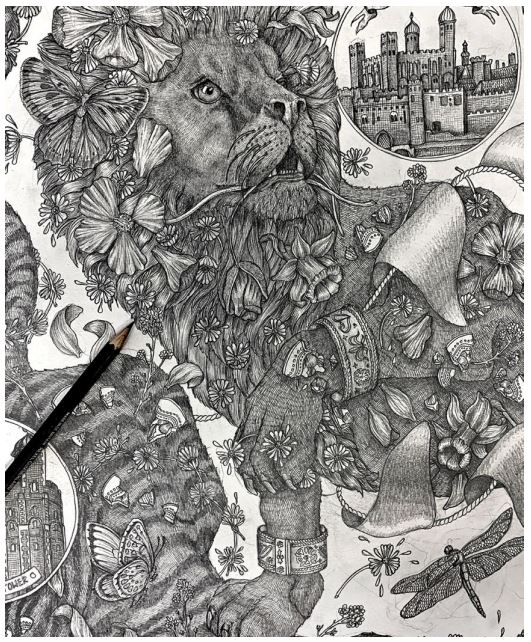
Image Description: A detailed black and white illustration of a lion with butterflies and flowers in its mane.
Induo
PARTICIPANT
Sébastien François
PROGRAMME
FashTech Accelerate
DURATION
July 2018 – July 2019
(12 months)
SUPPORT
Office space at Mare Street, monthly business coaching, additional expert workshops
‘I do a lot of sport and noticed that sportswear fabrics were amazingly advanced and super technical. Formal wear was dull and unoriginal in comparison.’
Induo’s story
Induo produces a cotton smart fabric that is stain and sweat resistant. The company was co-founded five years ago by Sébastien François, who wanted to address the innovation gap between technologically-advanced fabrics used for sportswear and traditional fabrics used to make formal wear.
After two years in the development phase, the fabric is now sold in more than 20 countries. Induoprimarily trades in Europe, with roughly half of the company’s revenue being generated in France alone. While most of the company’s nine employees are based in France, Sébastien is based in London and aims to expand the business and sales in Britain.
In February 2019, Induo successfully raised €1million for the growth and expansion of the company.
Breaking the UK
A lot of Induo’s initial growth in France was developed through personal connections. Arriving in London, Sébastien found that Induo did not have access to the same networks and potential buyers that he had in France. What’s more, he found that trying to enter a traditional sector such as tailored wear was difficult for a young company from outside the UK.
‘I have always moved around a lot – I’m a Schengen child. I thought that moving my business into a new country would be easy too. It’s not.’
Working with Centre for Fashion Enterprise Over the course of the FashTech Accelerate programme, Sébastien has received monthly two-hour
long coaching sessions relating to the organisation of the company. He has also participated in around ten hours of workshops focusing on other aspects of running a business.
Alongside training and development, Sébastien has also made use of free desk space in the CFE’s Mare Street offices, which Induo have occupied as their London base since July 2018.
In terms of skills and knowledge, the access to sustained support from consultants and experts came at a great time for Induo, who are undergoing a crucial period of growth. Sébastien feels that the coaching has been very useful for working out hiring processes, company organisation, and the nature of the relationship between the company’s co-founders. As a CEO, this coaching has helped Sébastien in understanding and embracing the role.
The marketing workshops have also helped the company adjust its UK strategy to make it suitable for a British audience. Induo has expanded its
London network through the project, picking up several clients directly through the programme including three sales following the CFE Manufactures Trade Show in October 2018.
Sébastien also said that the office space had been useful for the company, especially at the beginning of the programme, as overheads can cause issues for companies as they are starting out.
Investment for growth
Following the €1 million investment, Induo is focused on scaling the company, attracting bigger clients, and hiring four more employees, who will also be based in London. Sébastien will continue to use support from the CFE to find high quality candidates, which he feels is one of the main challenges Induo will face in the future.
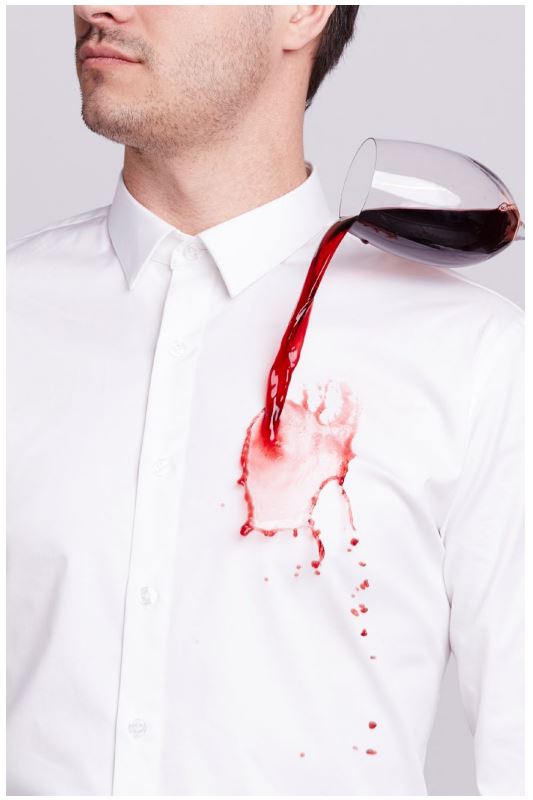
Image Description: A white man with dark stubble wears a white shirt. A glass of red wine pours down his shirt.
Charli Cohen
PARTICIPANT
Charli Cohen
PROGRAMME
Fashion Accelerate
DURATION
6 months
SUPPORT
Regular one-on-one coaching sessions and expert workshops. Free desk space.
‘University just felt like a very expensive studio. You don’t get industry contacts. The Centre for Fashion Enterprise was different.’
An introduction to the CFE
Charli was first introduced to the CFE through the Pioneer programme, which offered a light-touch form of support. A year later, she was looking for a more in-depth form of engagement with the Centre, and so she applied to join the Accelerate programme. Charli was specifically looking for support that would assist her as she looked to grow her business from a small team into a large company, as well as getting advice about how best to manage cash flow. She was aware that cash flow can be a huge issue for fashion brands at the start, so wanted to find other ways of generating revenue to balance this out.
‘(FTEF) consultants provide resources around the financial and digital, as well as strategic consultancy. This was very useful for me to get some outside input and to refine and evolve the brand’s strategy, without having to pay lots of money to get that support.’
Charli’s brand
Charli Cohen’s eponymous brand creates innovative technical-wear for men and women. She studied fashion at Kingston University and became a personal trainer during this time, inspiring her to design clothing with foundations in both contemporary style and technical performance.
Since launching in 2013, the brand now operates around the world, in London, New York, LA and UAE, with sales (individual and wholesale), also being made in Asia. Charli has also focused on forging partnerships to curate a positive brand image; such as with a content platform to create visual and musical productions, and celebrities such as singer Jess Glynne.
Tailoring the programme
Charli had a large degree of autonomy on the programme, working with consultants as and when she required their input and support. Specific coaching areas included wholesale; particularly valuable was the consultant who was able to offer international introductions. Charli was offered studio space, which she turned down as she already had her own.
A standout opportunity for Charli was the £5,000 she received to develop a new product.3 With this she made a very technical outerwear piece and was able to work with a specific factory. She then went on to receive a grant to be able to purchase some machinery for her own studio.
Looking to the long-term
Not only was Charli able to develop a new garment, but the programme also facilitated a ‘plug-in’ team to help her with cashflow in the interim, whilst it remains financially unviable to recruit more staff herself. This has freed up her time and headspace to be able to consider her business strategy more holistically, with a long-term focus.
She has also gained access to a wider network of industry and creative professionals, and her collaboration with Jess Glynne would not have been
possible if it were not for the programme.
Charli would like to see the brand’s direct sales overtake wholesale as the business’ primary source of revenue, as she feels that this would allow her designs to maintain their individuality and uniqueness. She also thinks it is more fun to work directly with your customer and allows for more spontaneity by designing and uploading a new product directly online. Her overarching aim is to continue to expand her business, whilst retaining the brand’s core values of sustainability and transparency.
3. The grant was not part of the ERDF programme, but was provided by LCF as part of a wider support package.
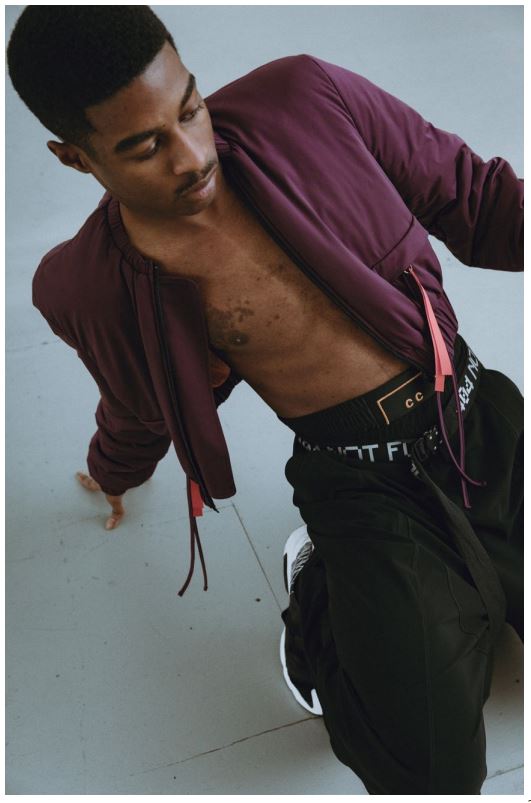
Image Description: A black male model wears a burgundy bomber jacket and sporty black trousers with a black and white canvas belt, his chest is bare.
BrikL
PARTICIPANT
Maarten Boon
PROGRAMME
Building Brand Equity
DURATION
April – May 2018
SUPPORT
Workshops and one to one support to become investor ready
‘Our biggest challenge initially was finding customers who were facing the challenge we were addressing, how our technology could find the best market fit.’
Disrupting custom-made clothing
BrikL is a 3D design software and e-commerce platform for custom-made clothing. The platform helps team and workwear, companies to sell custommade clothing online to schools, sports teams, leagues and companies requiring uniforms. The business focuses on three key markets: teamwear, corporate workwear and promotional items.
The platform technology is sold to fashion and apparel companies as a white-labelled solution which is then embedded onto clients’ websites. The technology enables users to pick from a range of products, see the options in 3D and customise elements of the garment design such as colours, prints, logos, and zippers. The software enables users to place orders for these custom garments directly with the teamwear company.
BrikL was founded in September 2016 by Maarten Boon who identified an opportunity for innovation following his experience working for a large US fashion company. The company now employs a dispersed team of 11 people on a mixture of freelance and employment contracts, the majority of which are software developers.
The attraction of FTEF
When BrikL enrolled on the FTEF programme in April 2018, it had attracted a small number of customers and the team began to focus on what they thought would be the next stage of their business: obtaining investment for scaling. They looked to Centre for Fashion Enterprise for help with this.
Learning from experts
The Building Brand Equity programme involved some structured workshops on investment models, one-to-one coaching, support to develop an
investor pitch, and a practice pitch session in front of peers and experts.
One of the most useful parts of the Building Brand Equity programme for Maarten was the chance to meet entrepreneurs who had experience of bringing ideas to market, getting investment, and structuring teams to deliver rapid growth. The team brought in experts who helped participants prepare an investor pitch. Through this, Maarten discovered how pitching to investors differs from his experience of presenting in a corporate environment.
‘When you are pitching to investors you need to sell an idea, sell a vision, you need to sell yourself, your passion. That was learning for me, coming from a corporate background.’
Maarten found talking to lots of different people about his business useful and the time out from running the business helped him to reflect on what was working and what needed to change.
An unexpected outcome
Although Maarten enrolled on the programme to find investors, the programme led to a significant but unanticipated change in direction for BrikL. Maarten realised he wasn’t clear who his customers were and that the platform they had been developing was over-specified and needed to integrate better with existing customer technology.
‘I think that is when I realise that the customers we had attracted weren’t the right ones and we had to pivot our business…. We completely abandoned our existing software and started over with the technology.’
This realisation was difficult for Maarten as he had invested a year in development work. However, it led to some important changes including additional functionality to integrate with customers’ existing e-commerce platforms and enabling 3D visualisations (previously it was 2D only).
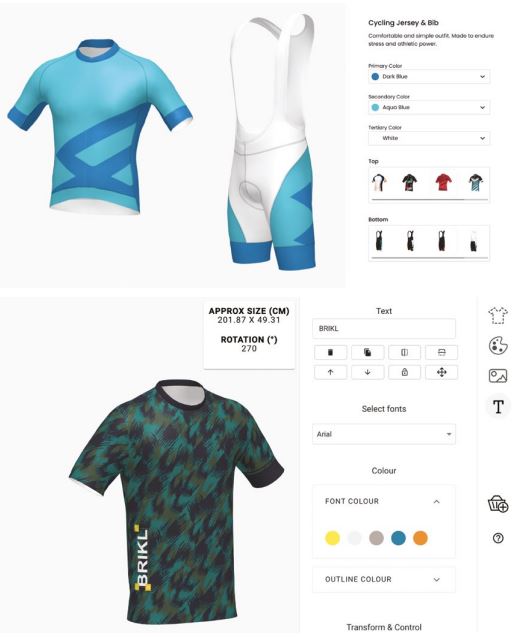
Image Description: A screenshot of the BrikL platform, showing a white and blue cycling jersey and bib. There are buttons to the left which allow for customisation.
Collarbone London
PARTICIPANT
Gerald Onuorah
PROGRAMME
FashTech Pioneer
DURATION
Nov 2018 – May 2019
6 months
SUPPORT
Expert one-to-one consultations
‘I made the decision to start my own business in April 2016 during a trip to India. A tailor made my suit in 24 hours. I wondered how quickly it could be done back home with a steady stream of orders.’
Tailor-made shirts
Collarbone London’s vision is to simplify bespoke tailoring for shirts by leveraging a network of tailors around the city. The company aims to create a seamless online platform whereby customers visit a local Collarbone-partnered tailor to be measured, build and customise a shirt through a mobile application and receive a made-to-measure shirt within ten working days.
The business was founded by Gerald Onuorah, who also works full time as a management consultant. At 6’5”, Gerald struggled to find shirts that fit well on the high street. His own experiences with tailors around the world led him to think about how the traditionally lengthy process could be streamlined. While the idea for the company came in 2016, it was not until April 2018 that the company took their first orders.
A barrier to realising the company’s ambition has been the prohibitive cost of app development. Following a consultation with a software company a year ago, Gerald decided to try a different approach. Collarbone London has operated a number of pop-ups across workplaces such as WeWork and The Office Group, measuring customers and taking orders on the spot.
Fashion or tech?
Ultimately, while the pop-up consultations have been successful, the company is still hoping to develop the mobile application in order to take the business to the next level. Their biggest challenge right now is finding investment to fund the software development.
Gerald has found it particularly difficult to communicate Collarbone’s offer – which straddles both the fashion industry and the tech industry –
to potential investors. He enrolled on the project looking for help figuring out where the company stood in the market and building a strong, coherent brand identity.
‘I wanted help defining the company. Are we a fashion-based company with tech as an enabler, or a tech company with fashion as an enabler?’
Refining the brand
The Fashtech Pioneer project provided an opportunity to assess the business, its target market, and Collarbone’s overarching message with a range of industry experts. This involved a consultation on the company website and digital marketing strategy, alongside other workshops on IP protection and cash flow management.
Gerald found one consultant in particular very knowledgeable when it came to existing funding schemes and opportunities, which had been an
area he knew very little about.
During the project, Collarbone overhauled their website in order to, in Gerald’s words, ‘bring it up to scratch’. What’s more, the brand’s message has been redefined and refined to coherently convey the concept behind the business.
Gerald has also been able to identify potential sources of revenue and funding to take the business to the next stage and pinpoint the exact areas of the market Collarbone would like to target.
Going forward
As Gerald’s involvement with the project comes to an end, he will focus on putting into practice what was covered in the workshops and securing the necessary funds to build a mobile application. He hopes this will help him realise the full potential of the company.
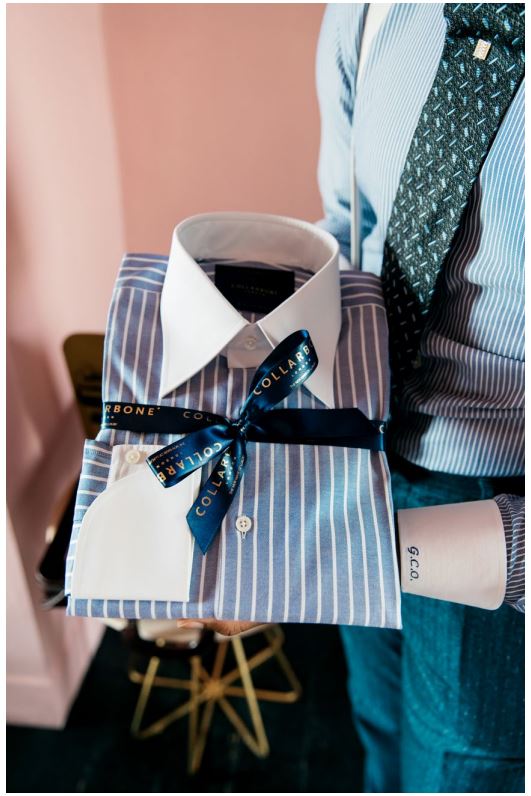
Image Description: Someone out of shot holds a folded blue and white striped shirt with a white collar and cuffs. The shirt is tied with a blue ribbon which reads “Collarbone” in gold writing.
Typical Freaks
‘We think more now. We think more long-term, both professionally and strategically.’
Ones to watch
Seun and Sonia met at London College of Fashion, where they began to casually design together. After Seun completed a Fashion MA at Central Saint Martins, they formally united in 2015 to create their first streetwear collection.
They draw inspiration from ‘kawaii’ culture and Punk, creating bold, colourful and conceptual pieces; taking the mundane and making it into something vivid, with their collection aimed at young women between the ages of 16 and 25 broadly speaking. They submitted their debut collection to Fashion Scout; a UK showcase which discovers and supports emerging designers from around the world.
It was there that Seun and Sonia won the ‘Ones to Watch’ award, going on to create a collection with ASOS shortly after. Seun and Sonia then moved into accessory design, with a core focus now on bags and scarves.
Managing cashflow
Seun and Sonia wanted to join the course to meet other designers and gain inspiration from them, as well as to become more financially astute. Cash-flow was one their biggest business concerns, and they also felt like they needed to further develop their marketing strategies and techniques.
At the time of enrolling on the programme, Seun and Sonia had taken part in other programmes, and so joining the programme felt like a natural progression for them. A needs assessment before every module provided the opportunity to receive bespoke support and ensure that they would be receiving the correct support throughout.
‘At university, we were taught about design, but not finance and markups. The practical business side skills we learnt on the course were helpful,
especially as we hadn’t done loads of internships.’
Doing their homework
The pair took part in all coaching and workshops available to them, attending talks and at least one workshop a month, and completing follow up independent work to solidify their learning. This follow up work, which included formulating Instagram posts and undertaking budget planning, was useful for Seun. He commented how they were very beneficial for their independent practice. This additional work helped to equip them with the tools and knowledge to continue expanding their business after the course finished.
What’s changed and what next?
Whilst Seun and Sonia have as yet seen no tangible implications of the course (i.e. no rise in sales), they recognised that the programme has had a big impact upon their mentality, meaning they now approach their business in a more professional, strategic way.
In order to assist the pair in approaching their business more strategically moving forwards, Seun and Sonia were able to take away valuable tools and templates, such as spreadsheets for measuring and forecasting cashflow, and sales orders.
The designers hope to collaborate with other fashion businesses in the future, as well as continuing to develop their marketing and press strategies. Creatively, they wish to continue designing garments and accessories, refining their prints over time to make them more wearable and consumable.
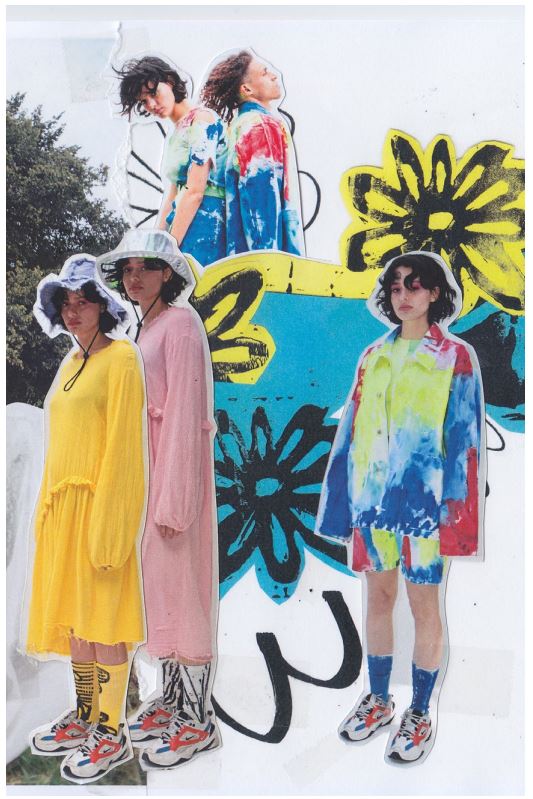
Image Description: The background is a bright collage of bold flowers on white, blue and yellow paper. Layered on top are cut out images of a female model who wears brightly coloured, long-sleeved dresses with bright socks, sun hats and trainers. In one outfit she wears a tie-dye shirt and shorts.
Ka Wa Key
PARTICIPANT
Jarno Leppanen and Ka Wa Key
PROGRAMME
Fashion Pioneer, Fashion Production 1
DURATION
June 2018 – December 2018
6 months
SUPPORT
One-on-one coaching sessions and experts’ workshops
‘Everyone has problems they need help with. All emerging designers have gone through a CFE project – it’s very respected by designers in London.’
East meets West
Finish-born Jarno Leppanen and Hong Kongese Ka Way Key blend eastern and western influences into a unique reworking of everyday streetwear, with an individualistic use of textiles. Specialising in knitwear, pastel hued and intricate designs push the limits of menswear with their gender fluid and sensual aesthetic. They initially started showing at men’s fashion week but are now focusing on an expansion into womenswear; hoping one day to realise their ultimate dream of creating a singular, non-gendered clothing line.
Both Leppanen and Key hail from a background in art, with postgraduate degrees from Finland and the Royal College of Art respectively. They launched their brand in 2015 and are now based in Dalston, East London. Creating clothing in-house, they experiment with fabric treatments on soft, laidback silhouettes to create their own unique look. They especially like using the Devoré or ‘burnout’ technique, in which mixed-fibre fabrics undergo a chemical process to create interesting and distinctive patterns. Such textile work earned them a place in the semi-finals at the International Woolmark Prize 2018/19.
Navigating nuances
With both designers having a background exclusively in the arts, Leppanen and Key recognised the need to develop their business acumen in a formalised way. They wanted to know how to make the most of their money, learning how to invest wisely and be cost effective. The nuances of owning a fashion brand are complex; they wanted to develop knowledge and skills relating to all levels of the business, ranging from fittings and productions, to business planning. They were also interested in developing data collection skills, to effectively analyse and use data to inform future business decisions.
Furthermore, they were aware that this project was reputable in London and many respected fashion designers had also been through the course.
‘Running a fashion brand is more than the creative, the need and demand for these [business] skills is massive.’
Accessing bespoke teaching
Leppanen and Key were enrolled on a particularly diverse programme, covering topics such as production to cashflow, and digital marketing to fashion policy. Delivered through a series of group workshops with industry professionals, the designers also had one-to-one follow-up sessions with workshop leaders. This offered more personal and bespoke support and insight, which they found particularly beneficial.
Making connections
The skills they gained from the programme have been embedded into their daily professional practice; Key particularly enjoyed the cashflow class, and still using the Excel sheet templates to keep up with company spending. The course allowed them to see their business and label from a different point of view.
The designers have also benefitted from the new networks and partnerships that were facilitated by the course. Workshop leaders connected them with wider industry figures, and they formed connections with other students. Ka Wa Key has since gone on to collaborate with other FTEF alumni, Typical Freaks.
Destination New York
Ka Wa Key’s next destination is men’s New York Fashion Week. They want to continue to strengthen their womenswear collection and forge more collaborative partnerships with fellow designers.
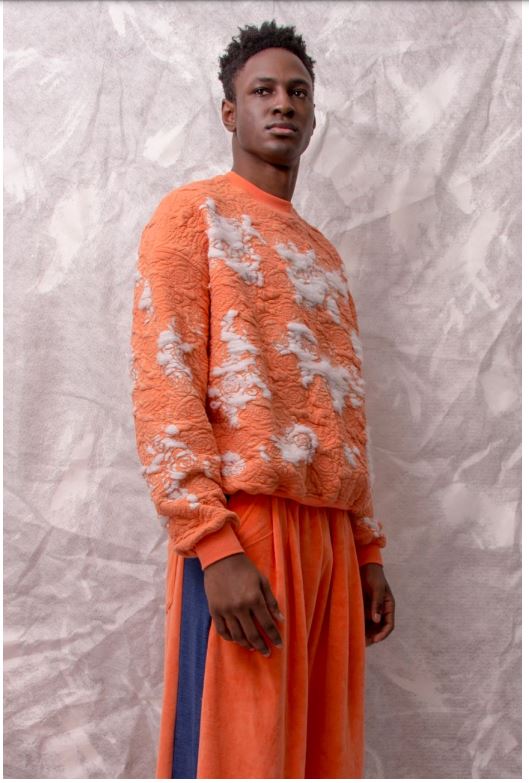
Image Descriptions: A black male model wears a bright orange sweatshirt with white patches that appear like clouds. He wears bright orange slouchy velvet trousers with a dark blue stripe on the side.
Will Odell
PARTICIPANT
Will Odell
PROGRAMME
Jewellery Pioneer
DURATION
May 2019
SUPPORT
Business review (diagnostic), 2-day business support programme.
‘I am looking for ideas on how to get over the fear factor. I need to make the process enjoyable and easy.’
Hand-crafting fine jewellery company
Will Odell comes from seven generations of metalsmiths and has been working in the industry handcrafting gold and silver jewellery for more than ten years. With a degree in Jewellery Design from the University of Creative Arts, Will’s collections feature distinctive hammer-textured gold rings, earrings and pendants, made with traditional techniques and superior gemstones.
In July 2007, Will established Will Odell Designs, a hand-crafting fine jewellery company, specialising in precious metals, diamonds and other gemstones. It is aimed mainly towards the high-end market, with commission work predominantly accounted for by engagement rings, making up around 60% of total commissions, with the remaining 30% coming from general commissions and the final 10% from other sales made either through shops or the existing website.
Getting bespoke
The biggest challenge faced by Will is in finding and engaging with new clientele, due to many of his existing commissions and incoming work being received through referrals, as his work and practice is shared by word of mouth. As a result, he highlighted this can result in problems around cashflow, as commissions can take longer and there can be a significant gap between the deposit and final payment. This meant that Will was particularly interested in finding ways to approach and access new buyers within his target audience of those who might be interested in purchasing bespoke jewellery.
The challenges of accessing this as yet untapped market often come as a result of potential buyers often playing it safe by choosing to purchase from a recognised brand name. Commissioning a piece of bespoke jewellery allows those purchasing to make the choices, which can be an intimidating prospect. As such, Will highlighted that it requires him to make that process as enjoyable and relaxing as possible, being flexible to have as many meetings as the client requires. A Goldsmith`s survey showed that around 60% of those in the market for purchasing jewellery of this kind don’t realise that they can get a bespoke ring, demonstrating even further the potential difficulties experienced in accessing new clientele.
Involvement in the FTEF project
Will decided to enrol as a participant in the FTEF programme in order to access and make use of the advice and business support opportunities that the programme offers. Through taking advantage of networking opportunities and building professional relationships through peer to peer support within the programme, Will was able to get make new contacts throughout the process (e.g. find out about new companies that do setting and polishing), and learned from those more experienced in certain areas (e.g. outsourcing).
‘Being with the fashion people was helpful, I’ve learnt about their business. They all outsource the production, keeping the design for them.’
Having attended most of the programme workshops, Will found the social media workshop particularly useful, demonstrating ways to reach new factions of the market, as well as the workshop focusing on copyrights, trademarks and patents, as it was ‘only there [he] realised that these are the processes where [he has] to take action’.
Following the programme
Although the outcomes of the programme are difficult to analyse as some were already in the pipeline, Will highlighted that the programme has
helped him to look at the future of his business more strategically.
The business support Will received from CENTA has proved invaluable, as he has been able to review the way in which his business functions and make critical decisions to benefit the long-term future of his business, such as outsourcing work rather than hiring an additional member of staff at present.
Having seen an increase in his commissions, the programme allowed Will to look the future more strategically. He has been working with his business advisor, Sally to establish market demand, and what he is able to do to address this, allowing him to continue to see the impacts of the programme as time goes on.
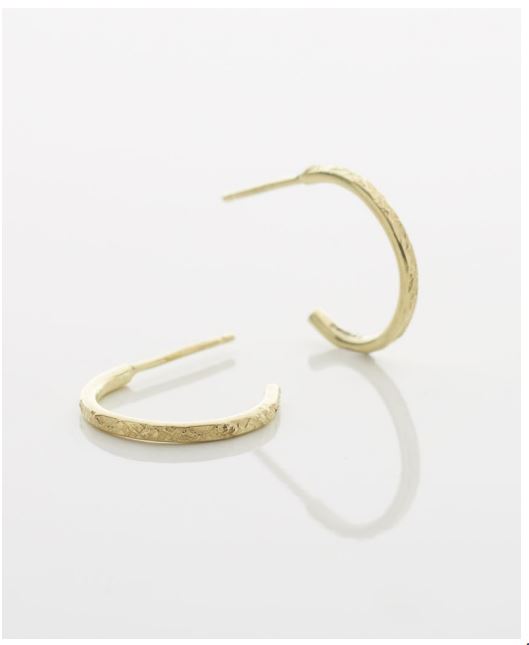
Image Description: A pair of gold hoop earrings are shown against a white background. The hoops are engraved with an intricate pattern.
Charles Jeffrey
PARTICIPANT
Charles Jeffrey
PROGRAMME
Fashion Accelerate and Fashion Pioneer
DURATION
2 years
SUPPORT
Access to free workspace and coaching and consultant support
‘With fashion you need to be business orientated, not just creative…graduates [from fashion schools] don’t have the business skills.’
LOVERBOY
Originally from Glasgow, Charles Jeffrey is a designer, illustrator and self-defined ‘radical creative’. His brand, LOVERBOY, was first launched in 2014 and encompasses a fashion label and cult club night, with each element informing and building upon the other. Hosted at Vogue Fabrics in East London, the club night and associated collections look to celebrate diversity and gender equality, drawing inspiration from costumes and queer icons. This when combined with the described kindness and friendship of nightlife and subculture, form the founding traits of Charles’ avant-gard-esque brand and his community of followers.
After graduating from Central Saint Martins and completing an internship in the Parisian haute couture atelier of Christian Dior, Charles was selected for the MAN project, established by Topman and Fashion East. This gave him the opportunity to nurture his talent and develop three collections. Following his first independent show in June 2017, American Vogue placed Charles Jeffrey high in the watchlist of the most promising British designers of his generation. For the same collection, he was also awarded British Emerging Talent Menswear at the British Fashion Awards.
Scaling the business
Despite his notable high-profile brand, Charles recognised that he needed to further his own knowledge and understanding of how to progress in order to scale his business. In order to achieve this, he saw there was need for him to integrate his business skills and mindset into his creative work, something which he felt had been missing from his formal academic education.
At the point of joining the programme, Charles saw building a team as the biggest challenge the business was facing. At the time, his team consisted of a pattern cutter and seamstress, but he saw that for the business to grow he needed to employ people to manage areas such as operations, finance, sales, and productions, in addition to a design assistant.
Charles considered the FTEF programme as an opportunity to engage with sector leading consultants and benefit from the provision of free studio space. For LOVERBOY, working with mentors meant primarily getting advice on how to grow his team and develop an organisational structure for the company. In doing this, the aim was to move from a brand working towards two annual Fashion Weeks and producing only two collections per year, to a stable organisation producing throughout the year.
Becoming self-sufficient
Gaining access to free studio space had immediate demonstrable value for Charles’ business. Where production space is a premium in London, Charles was able to have his growing team and productions co-working within a shared creative environment. This enabled the team to be agile in nature, allowing ideas to be developed and plans to be made quickly through a weekly Monday morning meeting where the team were able to regroup. This momentum was also encouraged and maintained through working in a shared space, surrounded by programme peers and the wider CFE community who played a critical role in creating a certain energy within the space.
As the leading figure in his company he also pointed out how beneficial the programme was in building his confidence in leading his team into new areas. The combination of a secure workplace and engaging coaching supported Charles to feel safer and be bolder in shaping his brand.
What’s next
At the conclusion of his experience with FTEF, Charles looks at his next steps with renewed confidence. Alongside the seasonal runaways the brand will present capsule collections during the year, focusing on sportswear and the concepts that were presented in the last shows.
The team will also move to a new studio location to continue designing their upcoming future collections and will expand the business model, working with a web developer to develop an e-commerce website.
‘Having free space and access to experts, it’s disproportionality more effective for people to grow their businesses, as they can take more risks. – Having the sense of security feeds into our work especially when funding is so hard to find.’
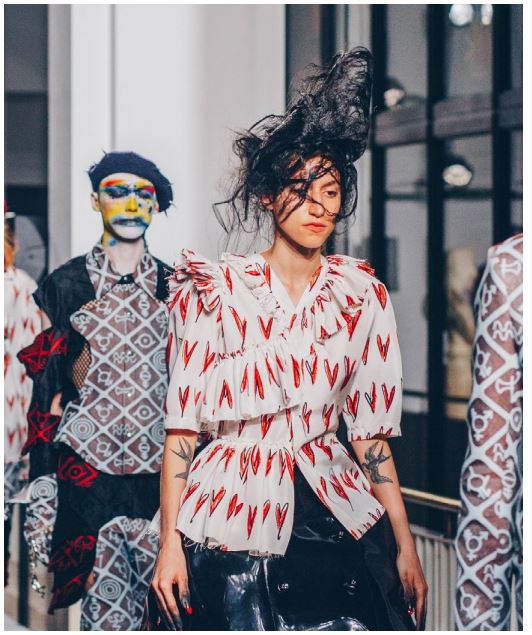
Image Description: A white female model wears a white blouse with a peplum, printed with sketchy red hearts. Her hair is sculpted into a windswept structure on her head. Behind her is another model who has bright painterly makeup all over their face, they wear a blue beret.
Credits
Introduction:
Linda Roberts, Director of Graduate Futures, Business & Innovation, London College of Fashion, University of the Arts London
Writing:
Eleanor Jubb & Joshua Dedman, BOP Consulting
Design:
Diego Ulrich, ASKEO
Images:
Emmi Hyyppä, www.emmihyyppa.com: page 2, 5, 7, 8, 9, 11, 15, 17.
Alexander White: page 19.
Clem Onojeghuo: page 21.
Hanna Fielder: page 23.
Petit Pli: page 25.
Ana Thompson Fine Jewellery: page 27.
Lofo: page 29.
Sabina Savage: page 31.
Induo: page 33.
Charli Cohen: page 35.
BrikL: page 37.
Collarbone London: page 39.
Typical Freaks: page 41.
Ka Wa Key: page 43.
Will Odell: page 45.
Charles Jeffrey: page 47.
The project has received £3.2mil. of funding from the England European Regional Development Fund as part of the European Structural and Investment Funds Growth Programme 2014–2020. The Ministry of Housing, Communities and Local Government (and in London the intermediate body Greater London Authority) is the Managing Authority for European Regional Development Fund. Established by the European Union, the European Regional Development Fund helps local areas stimulate their economic development by investing in projects
which will support innovation, businesses, create jobs and local community regenerations.
For more information visit: www.gov.uk/europeangrowth-funding.
